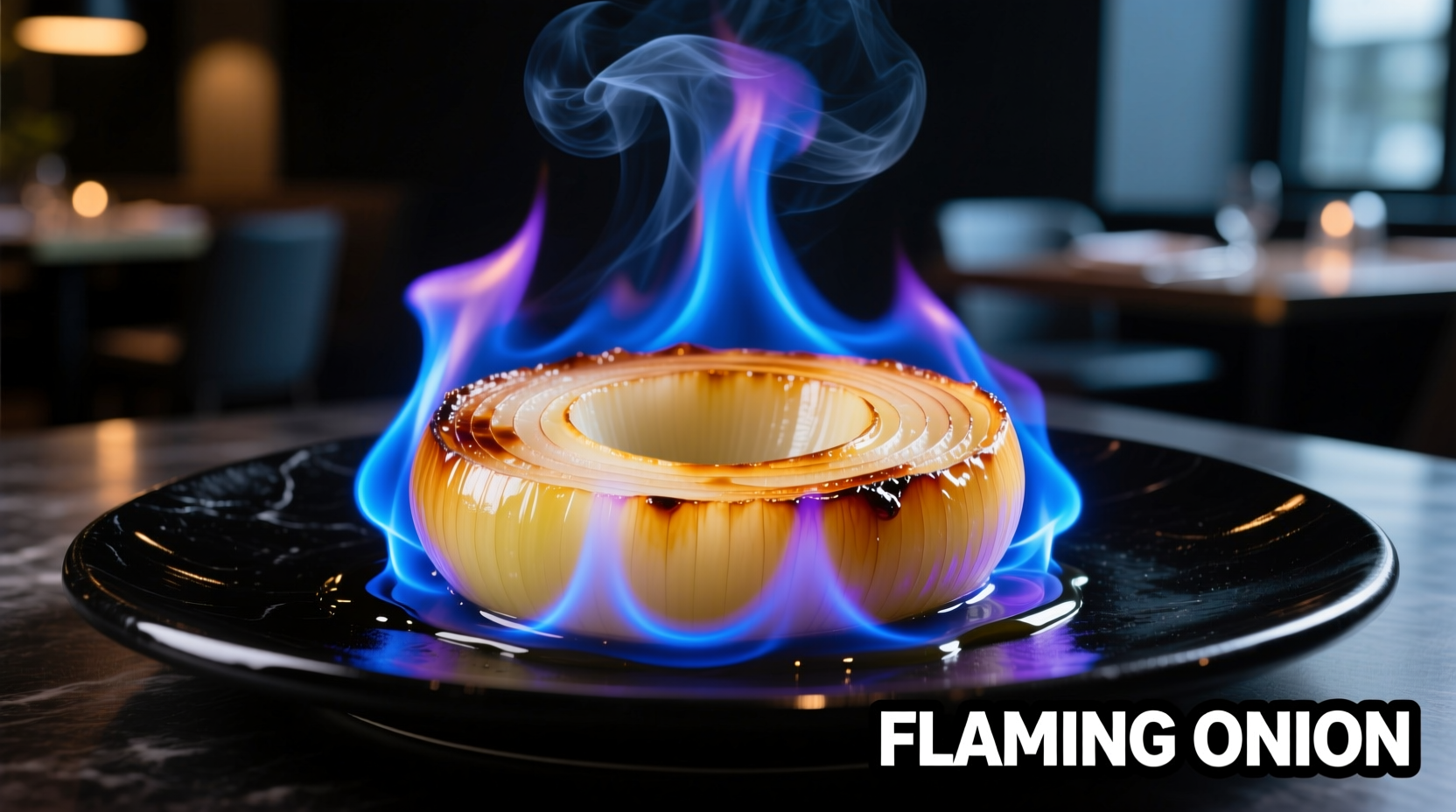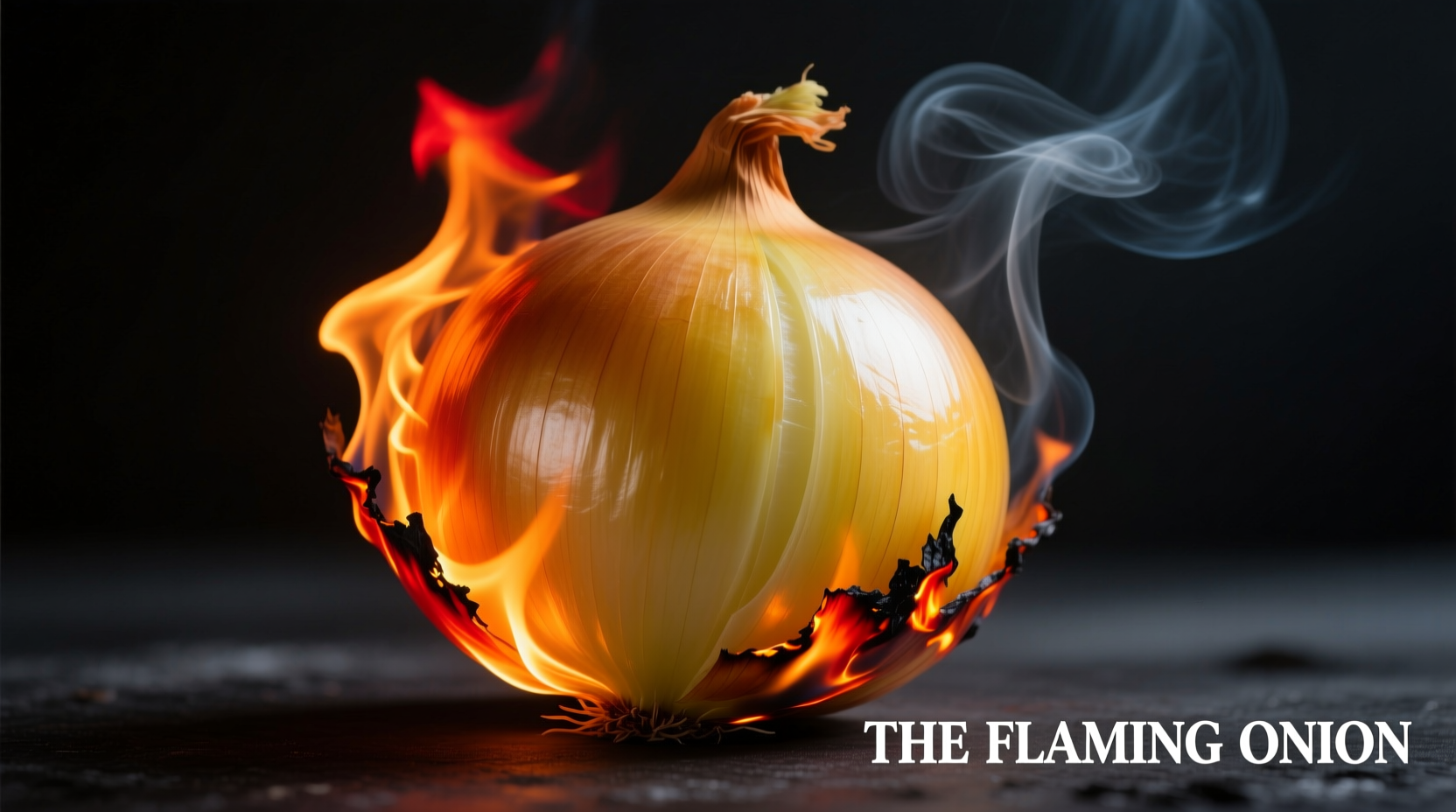The Story Behind America's Most Dramatic Appetizer
Imagine sitting in a dimly lit steakhouse when your server approaches with what appears to be a large dill pickle. With practiced precision, they slice it into a perfect flower shape, dip it in batter, and deep-fry it until golden. Then comes the moment that transforms dinner into theater—they pour high-proof alcohol over the creation and set it ablaze, creating a dancing blue flame that illuminates the table. This is the flaming onion, an American culinary spectacle that has captivated diners for decades.

From Steakhouse Innovation to Culinary Icon
While many assume the flaming onion is a recent TikTok sensation, its roots run much deeper. The dish emerged during the steakhouse boom of the 1980s when restaurants competed to offer increasingly theatrical dining experiences. Unlike viral food trends that fade quickly, the flaming onion has maintained its popularity through consistent execution and genuine culinary merit.
| Era | Development | Key Innovations |
|---|---|---|
| 1980s | Initial creation | First developed by Texas-based steakhouse chains as a signature appetizer |
| 1990s | National expansion | Spread to major steakhouse chains across the United States |
| 2000s | Standardization | Development of consistent preparation methods and safety protocols |
| 2010s-Present | Cultural icon status | Featured in films, television shows, and social media while maintaining restaurant presence |
The Science Behind the Spectacle
Creating a perfect flaming onion requires understanding both culinary technique and basic chemistry. The process begins with selecting the right dill pickle—firm enough to hold its shape when sliced but tender enough to cook properly. Chefs use specialized cutting techniques to transform the pickle into a flower shape without compromising structural integrity.
The batter composition is equally crucial. Most restaurants use a light, tempura-style batter that crisps quickly without absorbing excessive oil. This creates the perfect surface for the flaming process, where high-proof alcohol (typically 151-proof rum or Everclear) is poured over the hot appetizer and ignited.
"The key to a successful flaming onion isn't just the fire—it's the precise temperature control," explains culinary historian Sarah Johnson. "The heat from the flame creates a Maillard reaction that enhances flavor while the alcohol burns off, leaving behind subtle caramelized notes without overwhelming the palate with alcohol taste."
Safety First: The Unseen Protocols Behind the Performance
Despite its dramatic appearance, the flaming onion is executed with rigorous safety protocols that most diners never notice. Restaurants follow strict guidelines to ensure the spectacle remains safe:
- Using only high-proof alcohols with predictable burn characteristics
- Maintaining specific distances between flame and diners
- Training servers in fire suppression techniques
- Using specialized serving dishes that contain the flame
- Monitoring ambient conditions to prevent unexpected flare-ups
According to the National Restaurant Association's safety guidelines, properly executed flaming dishes like the flaming onion present minimal risk when prepared by trained professionals following established protocols. The brief duration of the flame (typically 15-30 seconds) ensures the alcohol burns off completely before serving.
Regional Variations Across America
While the basic concept remains consistent, regional variations of the flaming onion reflect America's diverse culinary landscape. In the Southwest, some restaurants incorporate chipotle peppers into the batter for added heat. Midwestern versions often feature a sweeter batter profile, while coastal variations might include citrus zest for brightness.
These regional adaptations demonstrate how a standardized restaurant dish can evolve to reflect local tastes while maintaining its core identity. The flaming onion's flexibility has contributed significantly to its longevity in the competitive restaurant industry.
Why Home Attempts Rarely Match the Restaurant Experience
Despite numerous "how to make flaming onion" videos online, recreating this dish at home presents significant challenges. Professional kitchens use specialized equipment including:
- Commercial deep fryers maintaining precise oil temperatures
- High-proof alcohols not readily available to consumers
- Fire-resistant serving ware designed for the purpose
- Trained staff with emergency protocols
Food safety experts from the USDA warn that attempting to recreate flaming dishes at home increases fire risk substantially. The controlled environment of a professional kitchen, with proper ventilation and fire suppression systems, makes the restaurant version significantly safer than home attempts.
The Flaming Onion's Enduring Appeal
In an era of rapidly changing food trends, the flaming onion's decades-long popularity speaks to its unique combination of culinary quality and entertainment value. Unlike novelty foods that rely solely on spectacle, the flaming onion delivers on taste while providing a memorable experience.
"The flaming onion endures because it creates genuine human connection," notes Johnson. "In a world of digital distractions, it brings people together around a shared moment of wonder. That's something no algorithm can replicate."











 浙公网安备
33010002000092号
浙公网安备
33010002000092号 浙B2-20120091-4
浙B2-20120091-4